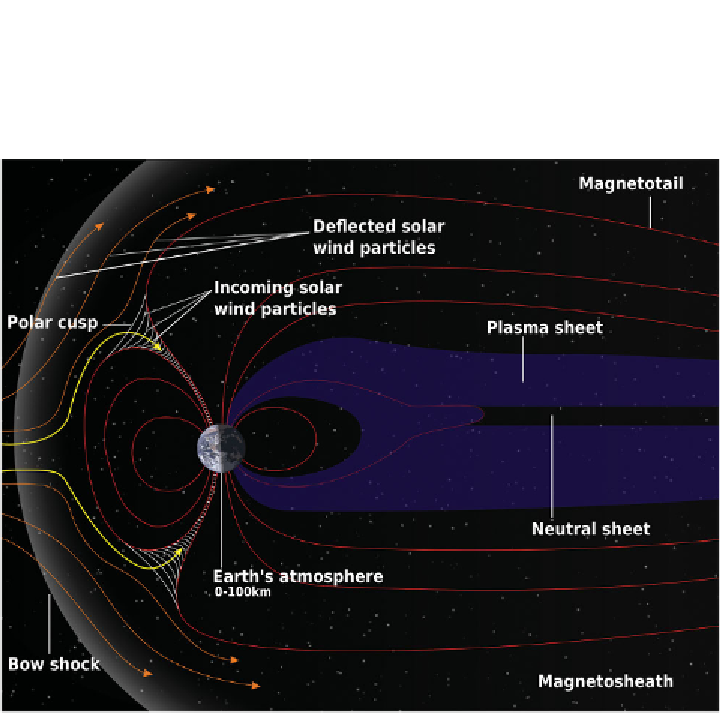Geoscience Reference
In-Depth Information
Figure 7.4 The overall structure of the Earth's magnetosphere. (Credit: NASA)
It is during such geomagnetic storms that disturbances and even interruption of
technologies are observed.
Inside the magnetosphere are several distinct regions of ionised gas, even
though these regions can be time-dependent in their structure depending upon solar
conditions. At the very top of Earth
'
s atmosphere, between altitudes of approximately
95 km and 250 km, is the ionosphere. This ionised layer around Earth is what
enables wireless communications at low and high frequencies. Aurora occur in the
ionosphere when the upper atmosphere is bombarded by charged particles from the
magnetosphere and from the Sun under solar disturbances. Since the poles of
Earth
s dipole magnet are in the polar regions, charged particles from the sun, in
the form of the solar wind and higher energies, can be funnelled into the polar caps
along magnetic
'
field lines that stretch upward to the boundary of the magnetosphere.
Two other major regions of ionised particles are the (1) plasmasphere, and (2)
the radiation belts. The plasmasphere is a region extending to about three earth radii
above the surface in which the ionised particles are largely from the ionosphere.
The plasmasphere can expand and contract in size depending upon geomagnetic
conditions as determined by solar emissions. The density of ionised particles



Search WWH ::

Custom Search